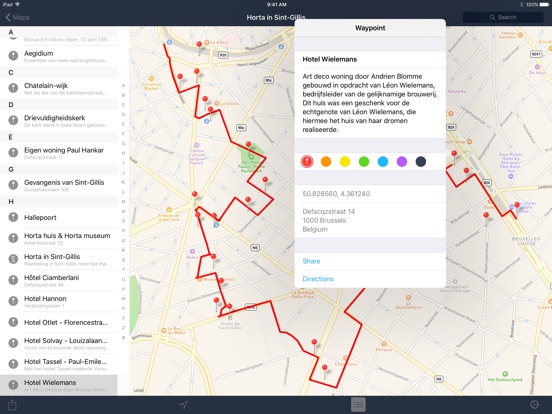Track Viewer (View GPX files on Google Maps) uTrack (online GPX track report generator) GPX Home. GPX is an open standard. All text on this Web page is in the public. View your GPX files quickly from Google Drive or local computer. Open GPX files quickly from Google Drive or your local hard drive. Need a way to get directions? Use this online map/online maps. Load GPX: Ctrl+O: Import and visualize GPX files (or drag and drop anywhere in the window) Draw: Ctrl+D: Start drawing a new route by placing track points on the map: Export: Ctrl+S: Download the files to your desktop or save to Google Drive™ to get a shareable link and embedding code. Time, heart rate, cadence and temperature data are. The GPX viewer is made for the purpose of viewing the gpx file that you recorded. You can load tracks from gpx file and show them on a Maps view. You can also see your GPS position on a map and use. GPX Viewer with Drive: The GPX viewer is made for the purpose of viewing the gpx file that you recorded. You can load tracks from gpx file and show them on a Google Maps view. You can also see your GPS position on a map and use viewer as navigation. This GPX Viewer.
Latest versionReleased:
GPX file parser and GPS track manipulation library
Project description
This is a simple Python library for parsing and manipulating GPX files. GPX is an XML based format for GPS tracks.
You can see it in action on my online GPS track editor and organizer.
There is also a Golang port of gpxpy: gpxgo.
See also srtm.py if your track lacks elevation data.
Usage
GPX version
gpx.py can parse and generate GPX 1.0 and 1.1 files. The generated file will always be a valid XML document, but it may not be (strictly speaking) a valid GPX document. For example, if you set gpx.email to 'my.email AT mail.com' the generated GPX tag won't confirm to the regex pattern. And the file won't be valid. Most applications will ignore such errors, but... Be aware of this!
Be aware that the gpxpy object model is not 100% equivalent with the underlying GPX XML file schema. That's because the library object model works with both GPX 1.0 and 1.1.
For example, GPX 1.0 specified a speed attribute for every track point, but that was removed in GPX 1.1. If you parse GPX 1.0 and serialize back with gpx.to_xml() everything will work fine. But if you have a GPX 1.1 object, changes in the speed attribute will be lost after gpx.to_xml(). If you want to force using 1.0, you can gpx.to_xml(version='1.0'). Another possibility is to use extensions to save the speed in GPX 1.1.
GPX extensions
gpx.py preserves GPX extensions. They are stored as ElementTree DOM objects. Extensions are part of GPX 1.1, and will be ignored when serializing a GPX object in a GPX 1.0 file.
XML parsing
If lxml is available, then it will be used for XML parsing, otherwise minidom is used. Lxml is 2-3 times faster so, if you can choose -- use it.
The GPX version is automatically determined when parsing by reading the version attribute in the gpx node. If this attribute is not present then the version is assumed to be 1.0. A specific version can be forced by setting the version parameter in the parse function. Possible values for the 'version' parameter are 1.0, 1.1 and None.

Pull requests
Branches:
mastercontains the code of the latest releasedevbranch is where code for the next release should go.
Send your pull request against dev, not master!
Before sending a pull request -- check that all tests are OK. Run all the static typing checks and unit tests with:
Run a single test with:
Gpxpy runs only with python 3.6+. The code must have type hints and must pass all the mypy checks.
GPXInfo
The repository contains a little command line utility to extract basic statistics from a file.Example usage:
License
GPX.py is licensed under the Apache License, Version 2.0
Release historyRelease notifications | RSS feed
1.4.2
1.4.1
1.4.0
1.3.5
1.3.4
1.3.3
1.3.2
1.3.1
1.2.0
1.1.2
1.1.1
1.0.0
0.9.8
0.9.6

0.9.5
0.9.4
0.9.3
0.9.2

0.9.1
0.9.0
0.8.9
0.8.8
0.8.7
0.8.6
0.8.5
0.8.0
0.7.3
0.7.2
0.7.1
0.7.0
0.6.1
0.6.0
0.5
Download files

Download the file for your platform. If you're not sure which to choose, learn more about installing packages.
| Filename, size | File type | Python version | Upload date | Hashes |
|---|---|---|---|---|
| Filename, size gpxpy-1.4.2.tar.gz (105.7 kB) | File type Source | Python version None | Upload date | Hashes |
Hashes for gpxpy-1.4.2.tar.gz
| Algorithm | Hash digest |
|---|---|
| SHA256 | 0832041899cdfdc5a607291bbef3d73042e16ffcecc3f2cb9631b699db0bb53f |
| MD5 | 9c1672d0d18aee259b0c3ac76f3eb9c3 |
| BLAKE2-256 | dd23a1c04fb3ea8d57d4b46cf2956c99a62dfbe009bbe091babeef90cc3d0ef6 |
What is GPX?
GPX (the GPS Exchange Format) is a light-weight XML data format for the interchange of GPS data (waypoints, routes, and tracks) between applications and Web services on the Internet.
.gpx Reader Download
Current Status
The GPX 1.1 schema was released on August 9, 2004. GPX has been the de-facto XML standard for lightweight interchange of GPS data since the initial GPX 1.0 release in 2002. GPX is being used by hundreds of software programs and Web services for GPS data exchange, mapping, and geocaching.
GPX for Developers
If you're a developer, read how GPX can help your application or web service.
How To Open Gpx File
View the official GPX 1.1 Schema.
Gpx Reader Online
Read the GPX 1.1 Documentation.
Learn how to validate your GPX output.
View the official GPX 1.1 Schema.
GPX is an open development effort. To participate in the future development of GPX, join the GPX Developers Forum.
User Benefits of GPX
If you own a GPS, find out how GPX is helping to make all your favorite applications work together.
Comments
To ask questions about the GPX format or propose changes, please join the GPX Developers Forum.
